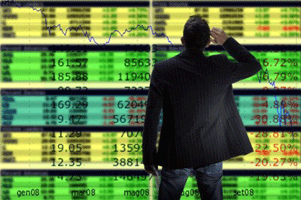
In the 1920s, the United States experienced a big blow when the stock market crashed. This event is now known as Black Tuesday. This started a series of problems for the country and created widespread social problems. The Great Depression, this period is commonly called, lasted for almost a decade, was believed to have been caused by an extensive stock market speculation and the unequal distribution of wealth.
Before this historic market crash, different kinds of people were getting rich due to the high return of investment (ROI). The "roaring twenties" as the decade was termed, was a period of growth for the US. Unfortunately, with limited information, speculation on the stock market during this time was comparable to gossip, and this was the very reason why the Black Tuesday happened. Sure, people read the newspaper, but this wasn't enough, as people didn't have a good picture of the whole stock market.
Nowadays, trading in the stock market is both complex and simple. Before a traders and investors decide to invest in certain stocks, they need to know a lot of information. Firstly, they have to determine the trend that the stock market will take - whether the market will experience a period of growth (a bull market) or if it will experience a decline (a bear market). By knowing the trend of the market, the investor can then decide how long he will retain the investment and how much he will invest. To determine whether the stock market will continue its trend or it will reverse its course, investors use indicators such as the Simple Moving Average (SMA) or Exponential Moving Average (EMA), Relative Strength Index (RSI), Moving Average Convergence/Divergence (MACD), Bollinger Bands. These indicators use the price of stocks to determine the direction of the market.
Just like the market of goods and services, the stock market also relies on the price and demand, in this case, it is called volume. Price refers to the trend of prices of stocks while volume refers to the amount of stocks being traded. To determine the volume, traders and investors look at the daily volume of stocks sold in the stock market. In most cases, trading tools combine these two information to find out if there are more sellers than buyers in the stock market, which could then, inevitably affect the price of the stock and the amount sold each trading day.
There are cases when there is high volume of sales but the prices in the market have dropped. For some investors, this could mean that the bigger players have backed out and it is a sign of a downward trend. Smaller players will soon follow suit causing lower sales. On the other hand, a stock can also experience a high-volume day and high prices. This means that the stock is up and bigger investors such as institutional investors and mutual funds will buy more, thereby boosting the market even more.
High-volume, low-price days don't always mean that the market is going to continue on a downward trend. These down days can sometimes be a precursor to a reversal of course. Institutional investors and mutual funds can sometimes take advantage of the low price of stocks to purchase at bigger volume. If this happens, the market can move to the opposite direction making stock prices to go up and the stock market starts a new cycle.




Add your Comment
use your Google account
or use your BestCashCow account